
This resource is a poster of the functions of the 3 branches of government.
- Subject:
- Social Studies
- Material Type:
- Reading
- Provider:
- USA.gov
- Author:
- USA Gov
- Date Added:
- 02/20/2017

This resource is a poster of the functions of the 3 branches of government.
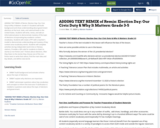
ADDING TEXT REMIX of Remix: Election Day: Our Civic Duty & Why It Matters: Grade 3-5
Students will build background and show understanding about government elections at the local, state, and national levels in the United States.
Students will write, revise, and edit an informational piece to demonstrate mastery of the topic of elections incorporating key academic content vocabulary.
Students will create a PPT with a teacher's model to demonstrate understanding and mastery of key content area vocabulary words.
Students will complete activities during independent work time or literacy stations. Provides a QR code for students to listen to stories (2 non-fiction and 1 fiction) about elections. After they listen to the stories they choose one of the non-fiction texts to write facts about, find the main idea and key details, and define new words

Students will identify services provided by local government and determine which government departments are responsible for various services. They will then assume the roles of city council members and prioritize various government services, allocating mock resources accordingly. Finally, students will discuss the importance of being active citizens and participating in their local government.
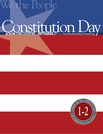
For this activity, students learn several important facts about the Constitution and its history.
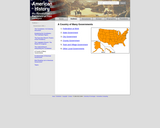
These pages shows students the structure of different local governments and how it functions to serve citizens.

These pages allow students to understand the executive branch of government. They will read about constraints and powers of the office of President as well as the departments they oversee.

Students learn about how public officials are selected, including election and appointment. Students also learn about and compare the roles of mayor, governor, and president along with learning who our current government leaders are.

In this lesson, students learn about how public officials are selected, including election and appointment. Students also learn about and compare the roles of mayor, governor, and president along with learning who our current government leaders are.

With this lesson, student explore the structure of government at the local, state, and national levels, as well as the services the government provides, and the financing for the services. Students compare the three branches of government focusing on the executive branch, how the levels work together and the enforcement of rules and laws.

With this lesson, students learn about local, state, county and national group decisions on taxation, as well as consent of the governed and how leaders can be elected who will fulfill the wishes of the people as designed by the Founding Fathers through the United States Constitution. Students also review traits of good citizenship and consider how they can help their own communities.

Students explore the structure of government at the local, state, and national levels, as well as the services the government provides, and the financing for the services. Students compare the three branches of government focusing on the executive branch, how the levels work together and the enforcement of rules and laws.
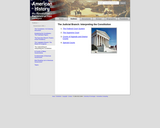
These pages expose students to the organization and function of the judicial branch of government.
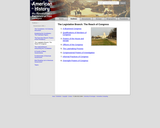
These pages allow students to see the organizational structures and powers of the United States Congress.
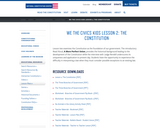
In this lesson, students examine the Constitution as the foundation of our government. The introductory Read Aloud, A More Perfect Union, provides the historical background leading to the development of the Constitution while the interview with Judge Rendell underscores its uniqueness and application to present day. Students have the opportunity to experience the difficulty in interpreting a law when they must consider possible exceptions to an existing law.

In this lesson, the students will learn about their local government and leaders. Throughout the lesson, students will engage in discussions, a visit by an elected local government official and research. In addition, students will learn some basic facts about their local government.

Students learn about local, state, county and national group decisions on taxation, as well as consent of the governed and how leaders can be elected who will fulfill the wishes of the people as designed by the Founding Fathers through the United States Constitution. Students also review traits of good citizenship and consider how they can help their own communities.
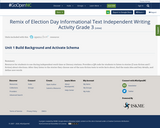
Students will build background and show understanding about government elections at the local, state, and national levels in the United States.
Students will write, revise, and edit an informational piece to demonstrate mastery of the topic of elections incorporating key academic content vocabulary.
Students will create a PPT with a teacher's model to demonstrate understanding and mastery of key content area vocabulary words.
Students will complete activities during independent work time or literacy stations. Provides a QR code for students to listen to stories (2 non-fiction and 1 fiction) about elections. After they listen to the stories they choose one of the non-fiction texts to write facts about, find the main idea and key details, and define new words
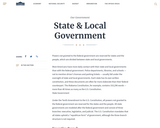
This resource provides an overview of our government.

In this lesson, students learn about the story of Ruby Bridges.

This presentation explains each of the three branches of government in the United States.